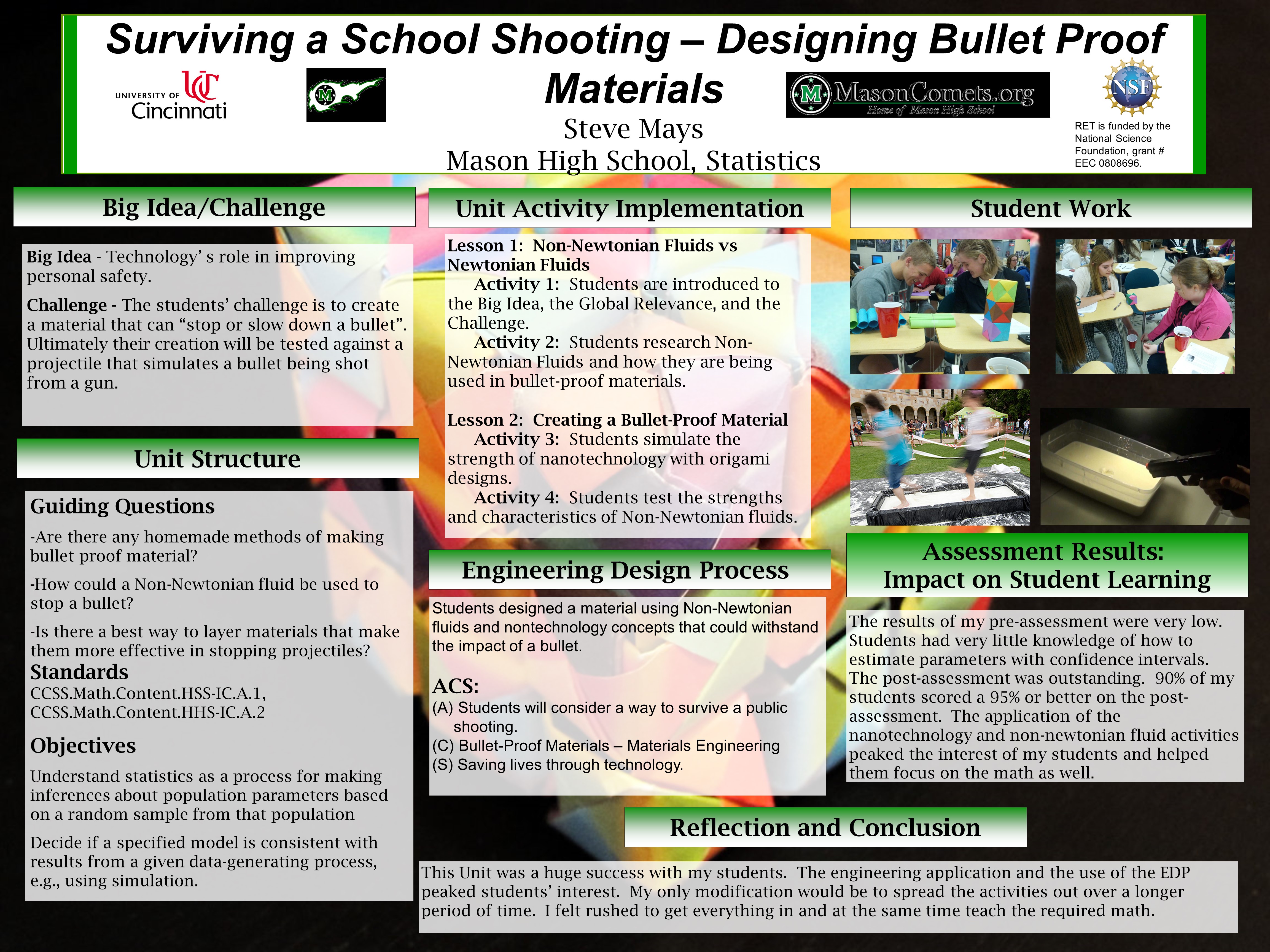Research Experience for Teachers (2013-2014)
Surviving a School Shooting – Designing Bullet Proof Materials
 |
||||||
|
||||||
|
Pre/Post Test: Pre Assessment |
||||||
|
The Big Idea (including global relevance) Technology’ s role in improving personal safety. Global Relevance: By creating a bulletproof material that can be made from homemade products, lives can be saved in the event of a public shooting. |
|
Essential Questions
|
|
The Hook
|
|
The Challenge The students’ challenge is to create a “vest” or “blanket” that can “stop or slow down a bullet”. Ultimately their creation will be tested against a projectile that simulates a bullet being shot from a gun. |
|
Guiding Questions
|
ACS (Real world applications; career connections; societal impact)
Feeling safe is an important part of morale and a positive spirit at school for both students and teachers. The process of designing a “bullet proof” material to be used in classrooms improves students’ awareness of what a safe school looks like.
By providing a safer school, students may want to look for more ways to contribute to the positive improvement of school morale.
By exploring the attributes of Non-Newtonian fluids, students are introduced to the science of materials engineering and nanotechnology.
Misconceptions
- A big misconception for students taking statistics is that “getting the right number” is the most important part of a question or challenge, but in reality, communicating what that “right number” means in a clear and concise way is just as important, if not more important. It is essential that the teacher of this Unit is constantly asking students to clearly explain what they are doing, what statistics they have discovered, and what those statistics mean.
Unit Lessons and Activities
- Lesson 1: Non-Newtonian Fluids vs Newtonian Fluids Lesson 1 will focus on giving students an understanding of what Non-Newtonian Fluids are and how they are being used in bullet proof materials. Students will research Non-Newtonian fluids and report their uses in multiple different scientific fields.
- Activity 1: Introduction of the Big Idea, Generating the Essential Question, Challenge, and Guiding Questions.
- Activity 2: Non-Newtonian Fluids: What are they and how are they being used and how can I make homemade versions of the materials?
- Lesson 2: Creating a Bullet Proof Vest Lesson 2 requires students to conduct different hypothesis tests. In one activity they will compare different configurations of materials to determine which is the strongest configuration and if there is a significant difference between them. In the other activity, students will test different Non-Newtonian fluids to determine if they can withstand a projectile similar to a bullet being fired.
- Activity 3: Exploring Nanotechnology: Fold, Roll, and Stack Your Way to Super-Strong Materials
- Activity 4: The Final Four: A Tournament of Non-Newtonian Fluids
- Evidence of CBL: Activity 1, 5
- Evidence of EDP: Activity 1, 2, 5
Additional Resources
- Men running over a pool of non-newtonian fluid that was mixed in a cement mixer.
- Viscosity of Non-Newtonian Fluids.
